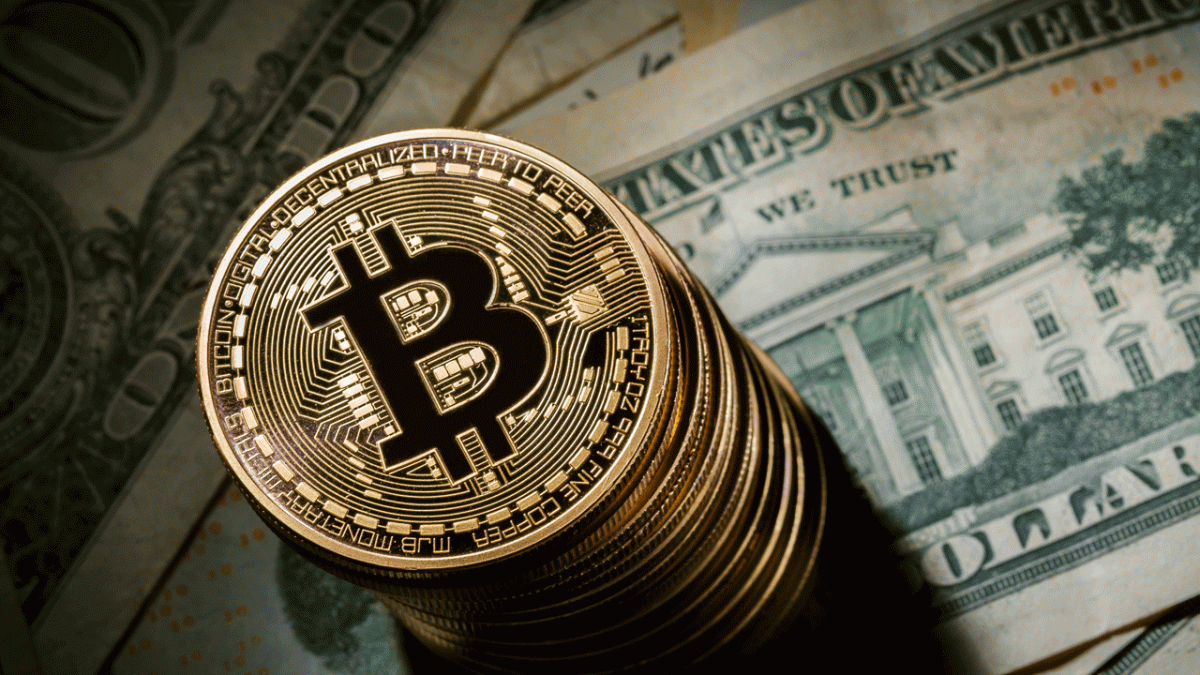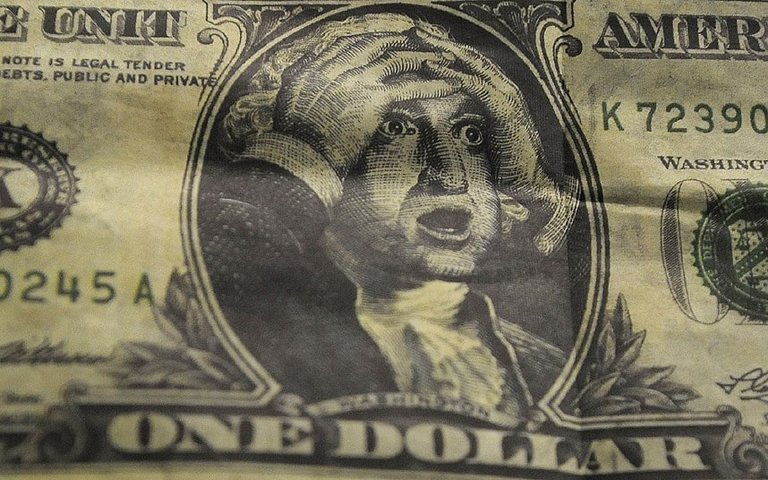
The meteoric rise of Bitcoin in 2017 is by almost everyone dismissed as a bubble. But it is not the only one. In a world where stocks, bonds, objects of art, classic cars and real estate are also at record highs, an investor should ask himself a very important question. Why? Why we have this bubble across all asset classes simultaneously? Could it be that this is just a sign? But a sign of what? One answer is “The most worrying sign of the implosion of the current monetary system awash with debt and credit creation“. As dramatic as it may sound – and likely be – there are lots of signs for the attentive investor to notice.

Investing with a medium- to long-term horizon is all about looking at the big picture, at geopolitical shifts which slowly but irreversibly change consolidated equilibriums and move money around the world in and out of different asset classes. Recently, Macrovoices.com published an interview titled “Anatomy of the US dollar end-game” with Jeffrey Snider (Alhambra Partners), Mark Yusko (Morgan Creek Capital) and Luke Gromen (The Forest for the Trees). By the way, Mark Yusko and Luke Gromen were also among the very few money managers who were right in making the call for a depreciating US dollar in 2017. This is a summary of the conclusions drawn, for an understanding of the arguments behind it, listen to the full interview.
1.The Crisis of the Euro-dollar Market
According to Jeffrey Snider, Head of Global Investment Research at Alhambra Partners, the Euro-dollar market – a short-term money market facilitating banks’ borrowing and lending of U.S. dollars outside the US – does not function properly since 2007 and it has essentially morphed into a US dollar “short squeeze” generated by a scarcity of dollars. Even if this mechanically means tides of “a rising dollar or a falling counterpart currency” in the short term, it is not a net positive-bullish for the US dollar as a reserve currency. What happened in 2014 could happen again and would trigger another dangerous liquidity crisis at a moments notice.
22.he US Debt Problem
The US debt and unbalances have never been a problem. Up until the world economy runs with US dollars and world central banks keep buying treasuries and the world energy markets are priced in dollars, then there is no problem. But now, because of geopolitical shifts out of the US dollar and US treasuries, this debt starts to matter. And the most likely way to deal with the debt problem for the US will be to ultimately devalue its currency, through inflation.
3.Abandoning the Petrodollar System
For Mark Yusko of Morgan Creek Capital and Luke Gromen of Forest for the Trees, China and Russia are both actively seeking to reduce their dollar requirements. For them, the reliance on the dollar is a chronic problem that must be solved and it has morphed into a national security issue. Therefore they are moving in a number of directions to both increase the dollar supply, while at the same time decrease the dollar demand by – for example – repricing oil into CNY. They also do bilateral trade, as well as trade with African partners or other Eurasian countries along the OBOR (One Belt One Road), in non-dollar terms. Another example, the Chinese lent US dollars to African countries and were repaid in oil last year, basically converting Euro-dollars into oil. Since Russia (with Saudi Arabia) is the biggest oil producer and China is the biggest consumer, the two partners have started in 2014 transacting oil in non-dollar terms. In addition, a new Oil Futures contract denominated in CNY was announced last year and started test trading in Shangai in December. As one of the interviewed puts it: ” Oil has been the currency of choice to back up the US$ fiat since we closed the gold window. If the flow of oil could be persuaded by the efforts of the various nations not to be denominated in dollars, that will affect the world´s global financial flows more than anything else. Because oil is the world´s most traded and the largest dollar based commodity”.
4. The Role of Gold as a Neutral Settlement Asset
The idea is nothing new. Already in 2010, Robert Zoellik at the World Bank called for the biggest 5 currencies in the world to be linked to gold. In 2011 Dominque Strauss Kahn did the same as head of the IMF, calling for the link between SDR´s and gold. Luke Gromen highlighted that the news is that the Chinese are now actively moving in this direction. In 2013 they announced to stop stockpiling US FX reserves and have imported physical gold. The same is valid for Russia and when this is linked to the oil trade, this may shift the oil trade from the Petrodollar to a new Oil-Gold system. As Luke Gromen puts it: “Russia bought gold the whole time now – unlike in ‘98, unlike in ‘08 – and the price of one ounce of gold in oil barrels more than doubled. It went from 13 barrels of oil per one ounce of gold to 30 barrels of oil per ounce. So if Russia got say 1,000 tons, then guess what has happened to the value of their gold reserves in terms of their largest economic output, oil? They’re richer. Their reserves rose. You see, what they’re doing makes their economy unsinkable and moves them irreversibly away from the dollar. And I think they’re being patient and playing the long term game. They know that all they’ve got to do is just continue doing this game and the dollar will collapse under its own weight. They don’t need to be aggressive.”
Therefore patience seems to be the name of the game here for China and Russia. And they both know very well how to play it.
5.Effect on Asset Prices
There was also unanimous consent on the effect that these big monetary system transitions have on asset prices, in the sense that they are extraordinarily inflationary to the currency that’s losing status. Simply put, for Luke Gromen, “what you’re seeing in equity markets, what you’re seeing in Bitcoin, what you’re seeing in Da Vinci’s and what you’re seeing in real estate – the everything bubble – is a completely rational response to the dollar bubble”.
Indeed, just note that the very same is at this moment happening to the stock market in Venezuela, as it has happened before in Argentina and in the Weimar republic.
Conclusions
When the discussion gets to the point of analyzing where we currently stand in this transition to a new monetary system or which will be the best road to it, the opinions are diverging. The followings are to be closely monitored to gauge how fast the demise of the dollar – as the global reserve currency – progresses:
the open interest and the volumes on the new CNY denominated Oil Futures contract, when it will start trading;
if the decoupling of the usual relationship between interest rate differentials and the dollar index continues like in 2017. In other words, if treasury yields are going up at the same time that the dollar index is going down, things are getting serious;
the holdings of US denominated reserves held by global central banks (and particularly by China, Russia and Saudi). Their holdings of US dollar-denominated reserves have peaked already in 2014 and have been on a slow but steady decline since then. Further declines will signal problems for the US to continue sustain its current levels of indebtedness;
If the “everything asset bubble” in the US keeps growing (emerging market style).
Finally, how should an investor invest in such a scenario? The three money managers agree to invest in gold, real assets, handpicked undervalued stocks and, hold your breath… yes, Bitcoin. Because the mother of all the bubbles could well be the dollar and not Bitcoin.
Nice write up. I think it's for these reasons we see so much cross over between the bullion/precious metals investing community and crypto investors. A good deal of people are trying to deleverage of the dollar and traditional equities.
exactly :)
I am with you on all of this, but how much longer will it be propped up? I really think the Bankers are behind the growth of Crypto (it seems obvious to me), so how will they manage the turnover? It is a delicate balance getting people to buy into "digital money" but not crashing the dollar (causing a panic on all sides). We may have a strong year with the dollar, followed by a decline when crypto is more liquid. If there IS a crash, I expect gold and silver to explode, but they may hold it off by creating Gold and Silver COMEX style exchanges to keep the price deflated as it is now. The printing press can still be used to manipulate the blockchain market, and you can bet IT IS!
Hi! I am a robot. I just upvoted you! I found similar content that readers might be interested in:
https://cryptodaily.co.uk/2018/01/the-mother-of-all-bubbles-no-one-talks-about/